
Horses are remarkable creatures as proven by their luxurious manes, shiny pelts, and majestic hooves. Every part of a horse’s anatomy is inspiring and beautiful. There is one area that is of particular interest to horse owners, and that is the feet and hooves.
A horse’s feet and hooves are critical to its survival. As they say, “no hoof, no horse.” Their hooves and feet provide support, help them stay active, and protect them from illness and disease. Thus, hoof and foot care is important for the health of your horse, and understanding all the parts of a horse’s hooves and feet can help you care for them.
Department of Veterinary Anatomy
College of Veterinary Medicine University of Missouri
The Anatomy Of A Horse’s Foot
When we talk about hooves, we picture the entire anatomy of a horse’s foot. However, the hoof is only one part of the larger anatomy. There are many parts of a horse’s foot anatomy, including:
- Periople: The periople covers the coronary band at the top of the hoof structure where the hoof meets the coat. The periople is where the hoof grows, and it gives the keratin time to harden before it reaches the surface of the ground.
- Frog: The frog is the V-shaped soft tissue located on the underside of the foot. The frog provides shock absorption and grip when a horse is trotting or running.
- Central Sulcus: The central sulcus in the indent found in the very center of the frog. It helps with shock absorption.
- Collateral Grove: The collateral grove consists of the two grooves that run perpendicularly along the sides of the central sulcus. It also helps with shock absorption and grip.
- Bar: The bar is one of the ridges found along the sides of the collateral groves. The bars strengthen the heel area.
- Heel: The heel is found at the back of the frog. It helps with balance.
- Bulb: The bulbs are the soft tissue bulbs along the back of the heel. They help with balance and weight distribution.
- Sole: The sole is the fleshy part of the horse’s foot, and it is located in front of the frog. The sole helps distribute the weight of the horse.
- The Water Line: The water line is the inner hoof wall that has no pigmentation. It helps support the function of the hoof.
- The White Line: The white line, also known as the laminae, is the white-colored line on the inner hoof. It connects the walls to the bone to help provide support and protect the sole.
- Toe: The toe is the front of the horse’s foot, and it’s covered by the hoof. Used for balance and movement, it supports the whole weight of the horse.
- Hoof/Nail: The hoof is the semi-hard nail of the horse. Made from keratin, it protects the toe from damage from impact with the ground.
- Quarter: The quarter is the central area of the foot between the toe and the heel. The quarter is important for support.
You can learn more about horse hoof anatomy by looking at your own horse’s foot. Take a moment to identify each part of the foot’s anatomy the next time you are picking your horse’s hooves.
Source: wikipedia.org/wiki/Horse_hoof
Disorders That Can Affect Your Horse’s Hooves
Though sturdy and functional, horse hooves are very delicate. They’re susceptible to damage and disease if not properly cared for, especially in stabled horses. Some of the most common ailments that affect a horse hoof include laminitis, navicular disease, thrush, white line disease, and quittor. All of these illnesses are painful for your horse, but with a healthy diet, plenty of exercise, and good grooming practices, you can prevent these issues from afflicting your steed.
Caring For The Whole Horse Hoof Anatomy
By understanding the full anatomy of a horse’s foot and hoof, you can learn how to care for them to prevent any issues. Here are some tips for keeping the entire horse hoof anatomy in check. You will need:
- A professional pick
- A stifle bristle brush
- Water from a hose or in a bucket
You’ll also need to know how to safely pick up a horse’s hoof. Make sure your horse is tied safely and securely. Then, position yourself near the side of the horse to avoid getting kicked. Gently touch your horse’s ankle and guide it slowly upward. The goal is to let your horse lift their foot on their own. After training, they will soon lift their foot without guidance. Firmly hold your horse’s foot in your less dominant hand and monitor them to make sure the position you are working in is comfortable for them. Once you have their foot lifted, here is how to care for each area:

Source: wikipedia.org/wiki/Horse_hoof
Caring For The Sole, Frog, And Soft Tissue
You’ll want to start by picking the feet. Picking is how you remove all the dirt, plant matter, and manure that can build up on the underside of the foot. Start with a professional hoof pick and use your dominant hand. You’ll work from the heel and move forward, cleaning the grove between the frog and the sole.
Continue dislodging dirt, stones, and debris until you reach the nail. Then, brush the foot with a stiff bristle brush to remove smaller pieces of dirt. Spray the area around the frog and sole with Kiss a Frog Foot Wash and allow it to dry for 2-3 minutes.
Caring For The Hoof/Nail
Caring for the hoof/nail is usually best under the guidance of your ferrier, so follow their recommendations when it comes to trimming and shodding. As part of your regular grooming, wash the area around the hoof with soap, water, and a stiff bristle brush to remove any dirt. Then, spray Jojoba Hoof Moisturizing Mist around the periople and let it run down. Use a clean cotton ball to spread the moisturizer into the nail. Let it fully absorb and do not wash it off before turnout.
Learning about all the parts of a horse’s hoof anatomy is important for the overall care of your horse. If you want more information on horse hoof anatomy, we recommend talking to your ferrier or veterinarian or checking out classes at your local extension office. If you’d like to learn more about how to care for your horse’s hooves with Equi-Spa products you can visit our Effective Horse Hoof Conditioning Tips blog or give us a call at 1-515-770-3517. We’ll happily answer any questions you have about horse hoof care.




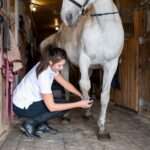

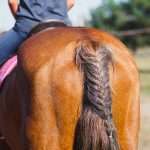

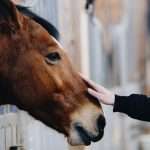
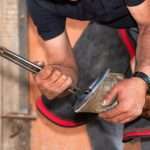
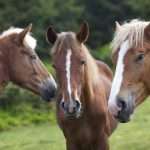
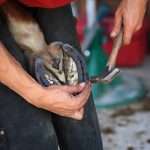

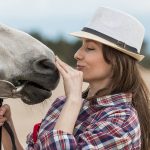
my horse has a gray stinky gooye stuff in his right front foot inside the split of the heel bulb. it is very sensitive when I clean it out. I have tried everything to get rid of it but nothing has worked..any ideas what is causing the gray stinky gunk??
it is probably Thrush or some fungal infection. I have a spray called kiss a frog foot wash and is very effective at cleaning the foot and daily use will keep it clean and less “gunky”